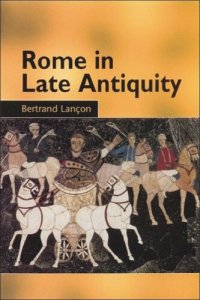
Ebook: Rome in Late Antiquity: Everyday Life and Urban Change, AD 312-609
Author: Bertrand Lançon
- Year: 2000
- Publisher: Edinburgh University Press
- Language: English
- pdf
This is a history of life in ancient Rome from the third to the seventh centuries AD. At the beginning of the period Rome was the centre of civilisation, by far the greatest city in the world, whose vast revenues supplied its million people with lavish provisions of food and wine and at least one hundred days of spectacular entertainment each year. It was a city of pristine marble, brightly coloured stucco, with temple and government buildings roofed in dazzling gold and bronze. Its citizens had access to public baths, gardens, libraries, circuses, amphitheatres, and venues for sea-fight spectacles. Well-maintained roads and aqueducts stretched from it in all directions.
When Pope Gregory died in Rome in 604 Rome had become a papal power, the centre of western Christianity, the Pantheon itself transformed into a church. The author examines the conversion first of the plebs and later of the nobility, the long struggle between ancient rituals of worship and Christianity, and charts the effects of the latter's triumph on the social and physical fabric of the city.
Professor Lancon describes the building of the great city wall which in 410 failed to prevent the first of a series of violent Gothic and Vandal incursions, and the citizens' valiant and repeated efforts to restore their city's glory. He considers changes in sexuality, the position of women, education, the family and life cycle, in the measurement, of time, and in the calendar of games and festivals. He examines the continuing role and prestige of the Senate, and the early years and rise of the papacy.
Bertrand Lancon brings three turbulent centuries of life in the world's greatest city vividly before the reader's eye: his account is as readable as it is scholarly. The book is introduced by Mark Humphries, who has also provided a guide to further reading for anglophone readers.